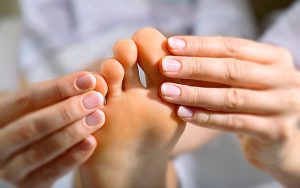Health Benefits of Reflexology
 Reflexologists believe that different areas on your feet and hands correspond to other parts of your body, and massaging them stimulates your parasympathetic nervous system to heal itself.
Reflexologists believe that different areas on your feet and hands correspond to other parts of your body, and massaging them stimulates your parasympathetic nervous system to heal itself.
For 3,000 years Chinese practitioners have used reflexology to re-balance Qi (the life force flowing through energy channels) to treat a number of conditions. It can work alongside conventional Western medical medicine to promote healing and improve wellbeing and vitality.
The Association of Reflexologists, which supports professionally qualified practitioners, has over 25,000 members and aims to increase knowledge of this non-intrusive complementary therapy.
What does it involve?
‘On your initial consultation, your reflexologist may ask you about your medical history, health issues, lifestyle and diet.
‘They will then apply painless pressure to your feet using their thumb and forefinger to identify which areas of your body aren’t functioning properly.
‘Sessions usually last 30 to 60 minutes and focus on the soles of your feet, unless you are very ticklish, in which case they can massage your hands.
‘Some reflexologists use five or six sessions to treat specific health conditions and you do not have to undress.’
How does it work?
Reflexology is based on the Chinese principle that certain areas on the soles of your feet or hands – known as reflex zones – containing millions of nerve endings, correspond to other parts of the body.
‘Around 3,000 years ago, Asian practitioners were massaging hands and feet applying pressure to certain points to stimulate organs, nerve endings and energy pathways to promote health,’ says O’Connell.
‘Though reflexology works on different principles to Western medicine, and there is little scientific evidence to back up its effectiveness, my clients say that their general health and wellbeing improves.
‘The Chinese believe that reflexology stimulates the body into healing itself by improving circulation, reducing stress, pain and restoring natural balance.
‘A therapist may massage your big toe and ankle to calm your endocrine and reproductive system, helping relieve PMS or menopausal symptoms.’
What can it help with?
‘If you have been injured or are lacking energy, reflexology can help to restore balance and coax your body into healing itself,’ adds O’Connell.
‘It can boost a sluggish circulation and is useful for treating stress, anxiety, back pain, migraine, poor digestion, irritable bowel syndrome (IBS), respiratory problems, asthma, headache, bladder problems, menopausal symptoms and period pain.
It can relieve the pain of multiple sclerosis (MS) and cancer treatments, but it should not replace conventional drugs like chemotherapy.
My clients comment that being able to zone out for an hour enjoying a relaxing massage has a positive psychological impact on their wellbeing, while pregnant women find that reflexology relieves the pressure on their legs and feet.’
Ask your GP
Some Trusts will fund reflexology for certain conditions, although currently NHS access to this therapy is limited and most people pay privately.
‘Since 2003, NICE has approved reflexology as a pain relieving treatment for patients with multiple sclerosis (MS).
‘Although little research has been done to prove that reflexology works to relieve the pain caused by MS, patients tell us that it does and often book further sessions.’
An Israeli study of 71 randomised MS patients backs this up. It reported that many patients’ motor, sensory and urinary problems improved after eleven weeks of reflexology.
However, be careful who you go to as anyone theoretically can call themselves a reflexologist, so make sure you ask where your therapist has trained.
The British Reflexology Association was one of the first reflexology associations to be established and students receive at least one year’s training.
Balance your ‘Yin and Yang’
Chinese doctors believe that our bodies are composed of the opposing forces of Yin and Yang that need to work in harmony for us to achieve health and vitality.
‘In Chinese medicine, reflexology works on a similar principle to acupuncture where the body is divided into 12 pairs of energy zones (Meridians). Chinese practitioners believe that when these energy channels become blocked a person feels unwell.
‘Both reflexology and acupuncture aim to dissolve any blockages causing ill-health by encouraging the free flow of vital energy through the body.’
Whilst acupuncture focuses on points along the Meridians, situated all over the body, and stimulates them with needles, reflexology focuses on the Meridians in the feet and works on them with finger pressures and is useful for people with needle phobias.
However, the therapy is not suitable for everyone and shouldn’t be used by people who suffer from verrucas or athlete’s foot, osteoporosis, a recently broken or fractured bone in your ankle or foot, or broken skin.
